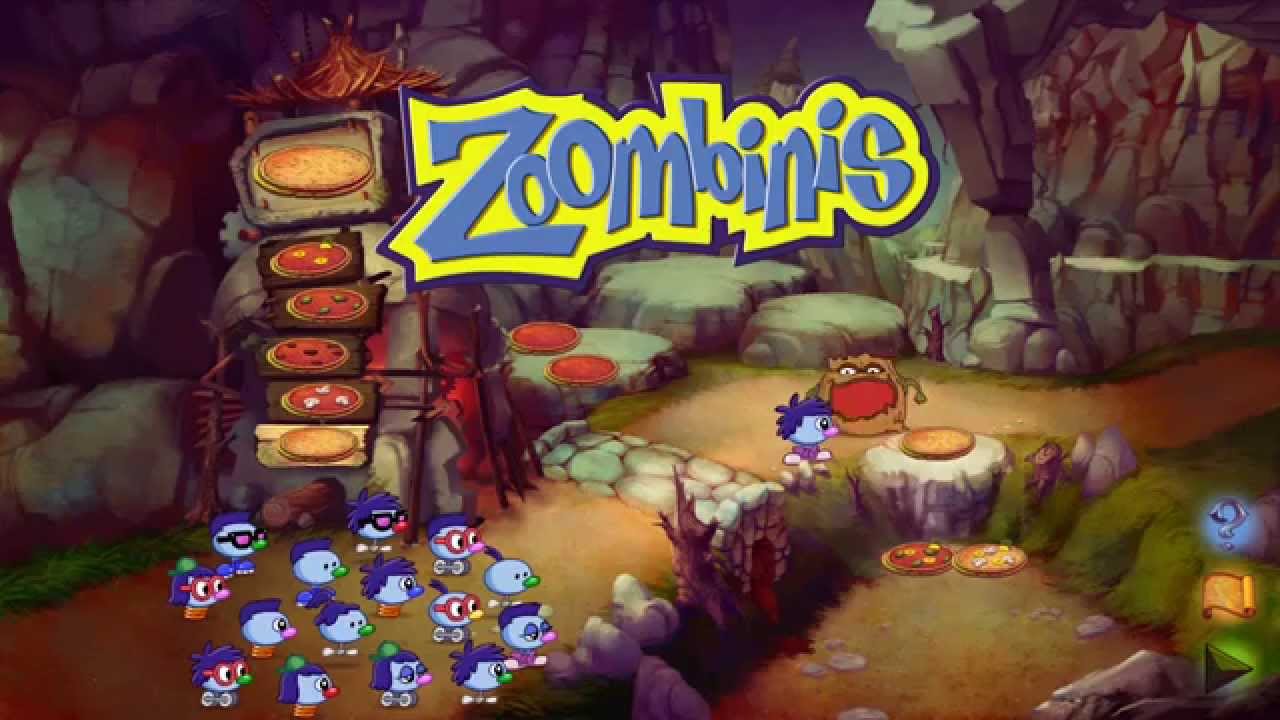A note from the FableVision editor: This blog series over the next few weeks is written by FableVision’s Tone Thyne, Vice President of Creative. This series will give you a front-row seat to what it’s like to create a show, an over-the-shoulder look at the creative work that Tone and Gary Goldberger, FableVision President and Co-Founder do here at the Studio. Curious about how we got here? Catch up on Part One of the series here, and read more about Tone here, Zoombinis here, and download the game to play!
I may not be exaggerating when I say I’ve been playing Zoombinis during every waking moment over the past couple weeks and there’s a chance I’ve actually spent a few more hours in Zoombiniville than the Zoombinis themselves. And my 10 year-old son has officially decided he wants my job when he grows up.
As for Zoombinis, I finally get the hype. It’s an incredibly addicting romp for someone like me who thrives on puzzles, logic challenges, and perseverance. The game is “deliberately designed with no tutorial or instructions with the intent of teaching kids to explore, develop theories, and test their ideas” so I’ve had to figure it all out on my own. That’s some accomplishment.
Here’s what I learned, in no particular order:
- As a player, your goal is to navigate a group of little blue creatures called “Zoombinis” through different screens and ultimately on to their new home, Zoombiniville.
- Players use strategy and logic to solve the puzzles that allow the Zoombinis to move safely through different screens.
- The Zoombinis don’t have personalities or voices. They don’t even have arms. Although they are the main focus of the game, they pretty much go along for the players’ ride.
That’s the major CliffsNotes version. We’ll touch more on aspects of the game as we move through this journey of the Journey.
So – the big question – how to turn this game into a show?
Let’s start with Laurie Brennan, David Libby, Glen Secor, Jodi Asbell-Clarke, and Teon Edwards to get a sense of what their hopes and dreams look like. Gary and I ventured to Cambridge to meet with the TERC team.
TERC, Gary and I discussed the massive fan base Zoombinis has amassed and how disappointed the devotees would be if the series were to veer too off-course from the beloved property. It’s far more common to create a digital game from a broadcast property than what we’re trying to pull off with Zoombinis. Game first – then series. Then again, there was this gem from 1982:
We want viewers to be able to toggle back and forth from watching the series to playing the game as a multi-platform experience, rather than different incarnations of the same property. So it’s really important to me that the Zoombinis characters in our series shouldn’t be cooler than the characters in the game. In other words, since the Zoombinis don’t talk or emote in the game, I think it would be strange for them to each have voices and personalities like The Smurfs. Although they can still be blue.
What that means is we need to create an engaging set of main characters that should connect with our young viewers – but do so without talking. It’s a bit like creating a theatrical production featuring a herd of mollusks. (Not the world’s worst idea.)
So I proposed the Zoombinis series could perhaps take a page from Rosencrantz and Guildenstern Are Dead or Wicked – exploring the story from a different perspective. Perhaps watching the Zoombinis along their journey from the view of ancillary characters in the game who interact with the little blues? It may be an interesting way to feature the Zoombinis – without expecting them to do any of the heavy lifting (after all, they don’t have any arms.)
TERC was intrigued, and so Gary and I immediately set a meeting with Scot Osterweil at MIT. Scot is the grandaddy of all Zoombinis. Actually, to be more specific, he’s their dad. The Zoombinis sprung from his imagination in the early nineties when he worked at TERC with Chris Hancock, together developing what would eventually become the beloved game.
Scot, Gary and I are going to meet next week in Scot’s office to volley ideas around. I’ll come armed with some concepts I’ve been mulling since the meeting with TERC to avoid the dreaded: “What do you want to do?” “I don’t know. What do you want to do?” “I don’t know. What do you want to do?”
____
I love animation because by nature, it is a cumulative process. Each important step along the production line allows the project to grow bigger and better. Imagine a kid rolling a snowball through a field of snow. As it gets bigger, another kid may need to help roll it. The further the kids roll the snowball, the larger it becomes. Pretty soon, it’s so enormous and so magnificent that several kids need to help roll it. Show creation is precisely that.
Gary and I are going to roll our snowball over to MIT to see how much bigger and better Scot can help us make it. See you next time.


























